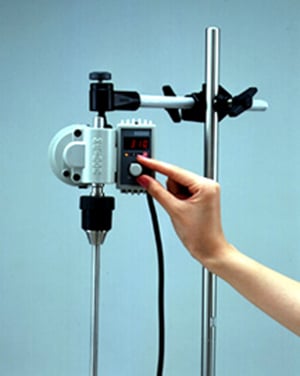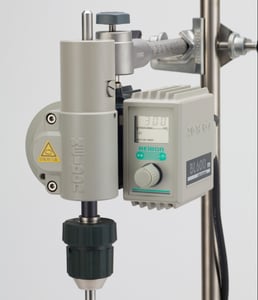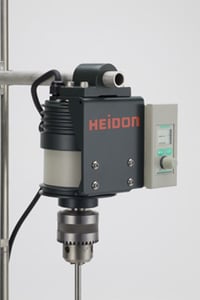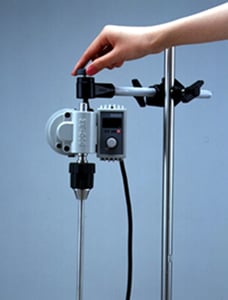 Factory and laboratory mixing can be a challenging business. Especially with materials like polymers, which can be extremely tasking to uniformly mix, having the wrong mixer can be disastrous. Different viscosities can make it hard to mix these polymers fully.
Factory and laboratory mixing can be a challenging business. Especially with materials like polymers, which can be extremely tasking to uniformly mix, having the wrong mixer can be disastrous. Different viscosities can make it hard to mix these polymers fully.
But polymers and other materials that require quality laboratory mixers like paper, pulp, and chemicals, aren’t going away anytime soon. In fact, some suggest that we distinguish this age in history as the Polymer Age, compared to the Iron Age and the Bronze Age of centuries past. The use of these materials is so widespread from pharmaceutical drug delivery systems to household products; it’s crucial that they are well-mixed and well-made.
With the wrong mixer, difficulties can arise in the laboratory though. Multiple viscosities can mean “ring layers” in a mixture, where varying viscosities settle at varying heights within the mixture, resulting in poorly mixed, potentially weak materials. And combining chemicals can be a “volatile” task with the wrong mixer.
This is where the Z+ mixer model series becomes a major benefit.
High Torque and Steady Mixing Speed
Like all of our laboratory mixers, the Z+ model of mixers has high torque capabilities, so that no matter the thickness or viscosity, your mixing system is moving at a constant, steady speed. There’s no change in motor speed with especially high viscosity samples.
Think of using a hand mixer to make peanut butter cookies: The dough is thick and sticky, and can be challenging to mix. The more flour you add to the dough, typically, many hand mixers will slow down in speed, all the while you can hear their motors are working overtime to mix the flour into the dough from the bottom of the bowl to the top.
With the Z+ mixer, even as your mixtures change in viscosity as they are combined and the materials react with one another, the speed will remain constant. At trade shows, we often demonstrate this feature by grabbing the rotating shaft and trying to slow it... at best, it may change 1rpm!
This is a lot like a subpar laboratory mixing system that doesn’t have a lot of torque. Mixing with these lower-torque options not only leaves you with an inconsistent mixing speed, but it also can be taxing on the motor as well. That's why many lab managers consider mixers "throw away" items. After they get overworked, the motors are damaged and they get frequently replaced.
Our models are designed to conquer even the most demanding of mixing applications with consistency - no matter the viscosity. There’s even a dual-mode protection to prevent this kind of motor overload, so your investment in a laboratory mixer lasts you a long, long time.
Reciprocating Agitators
Some mixtures, like polymers, are made up of varying viscosities, which means that oftentimes, these mixtures will settle, with higher viscosities resting towards the bottom of the mixture, and lesser viscosities rising to the top.
Before a thorough mixing, it’s a lot like a new can of paint or your favorite oil-based salad dressing: You end up with “rings” of varying materials settling at different heights. And no matter what you do to mix your polymer, chemical solution, or other material, the higher viscosity materials work their way to the bottom. To actually mix everything completely and thoroughly from top to bottom? It can take a long, long time. Further, unless the mixing vessel is clear, you may not be able to determine if the mix is homogenous.
This is not the case with our Z+ model series, which has an automatic raising and lowering action - also known as reciprocation. This expedites the mixing process and eliminates those unmixed ring regions you might find especially towards the top or bottom of a polymer blend with varying viscosities.
The Z+ model series supremely handles the most challenging of mixtures, with multiple viscosities, because of its unique reciprocating action.
Other Benefits
What else can the Z+ model series of laboratory mixers do for you? Here are some of the other beneficial features that will revolutionize the way you mix in your lab:
- Keyless chucks, so you can safely and securely attach the mixing shaft to the mixer without any kind of key, and also without any kind of worry about the security of the mixing shaft.
- Some advanced models include auto-reversing and torque input/output measurements to monitor mixing capacity at varying viscosities. This also helps determine changes in viscosity as the materials are mixed, documenting when the mix has become homogenous.
- Manual, programmable, and data output models.
- Dual safety systems, with thermal motor protection and a current limiter to protect your mixer from overheating (and to protect you and your team). And a brushless motor that does not generate sparks.
- Multiple kinds of attachments and accessories like blades, shafts, stands, and stoppers to match every one of your needs.
We believe in the power of our Kett Heidon Z+ model series so highly. In fact, there’s not much we think this laboratory mixer series can’t handle. Want to talk with us about the benefits of our Z+ model series, and the changes it can make in your lab? Contact us today!



